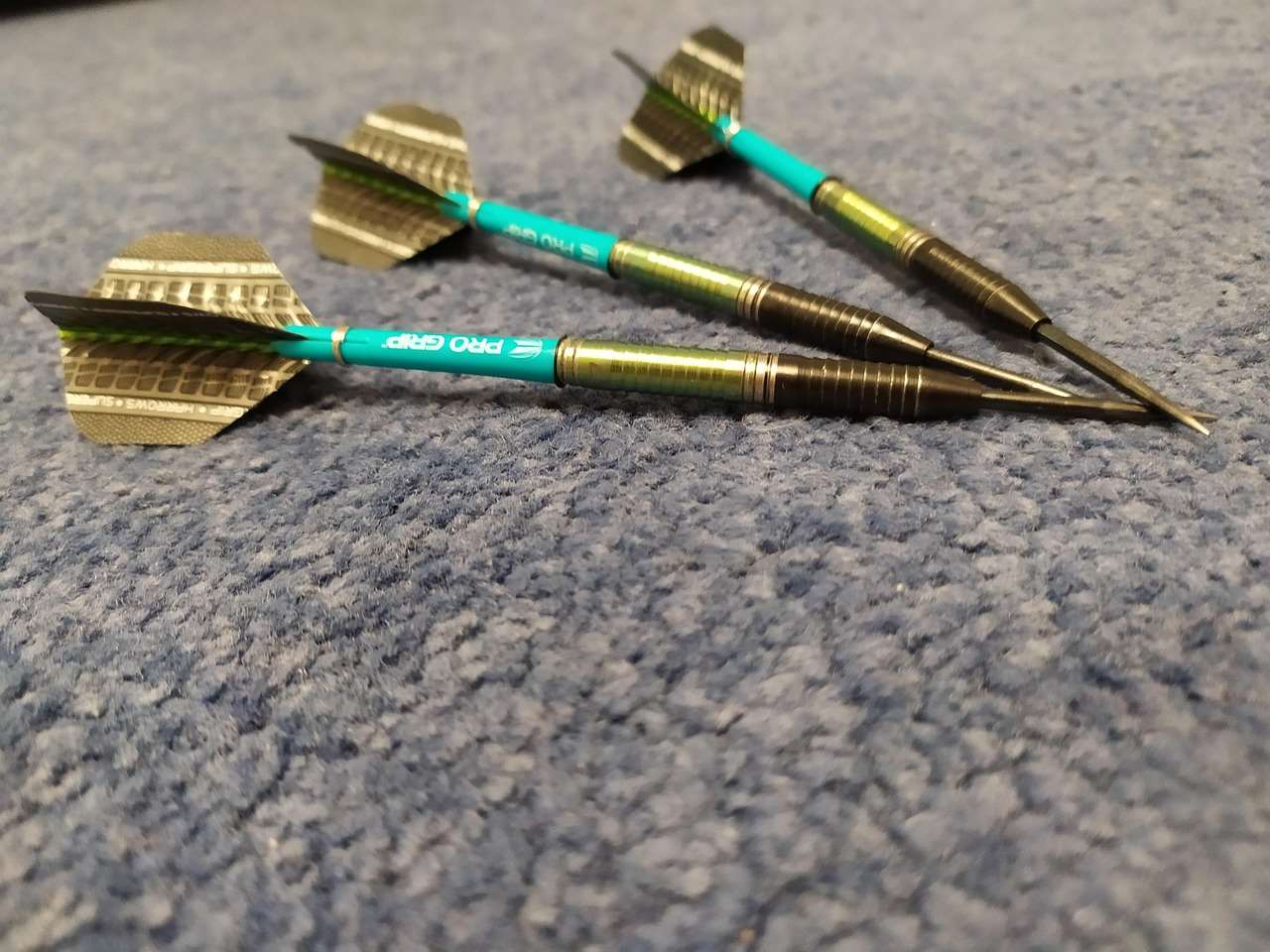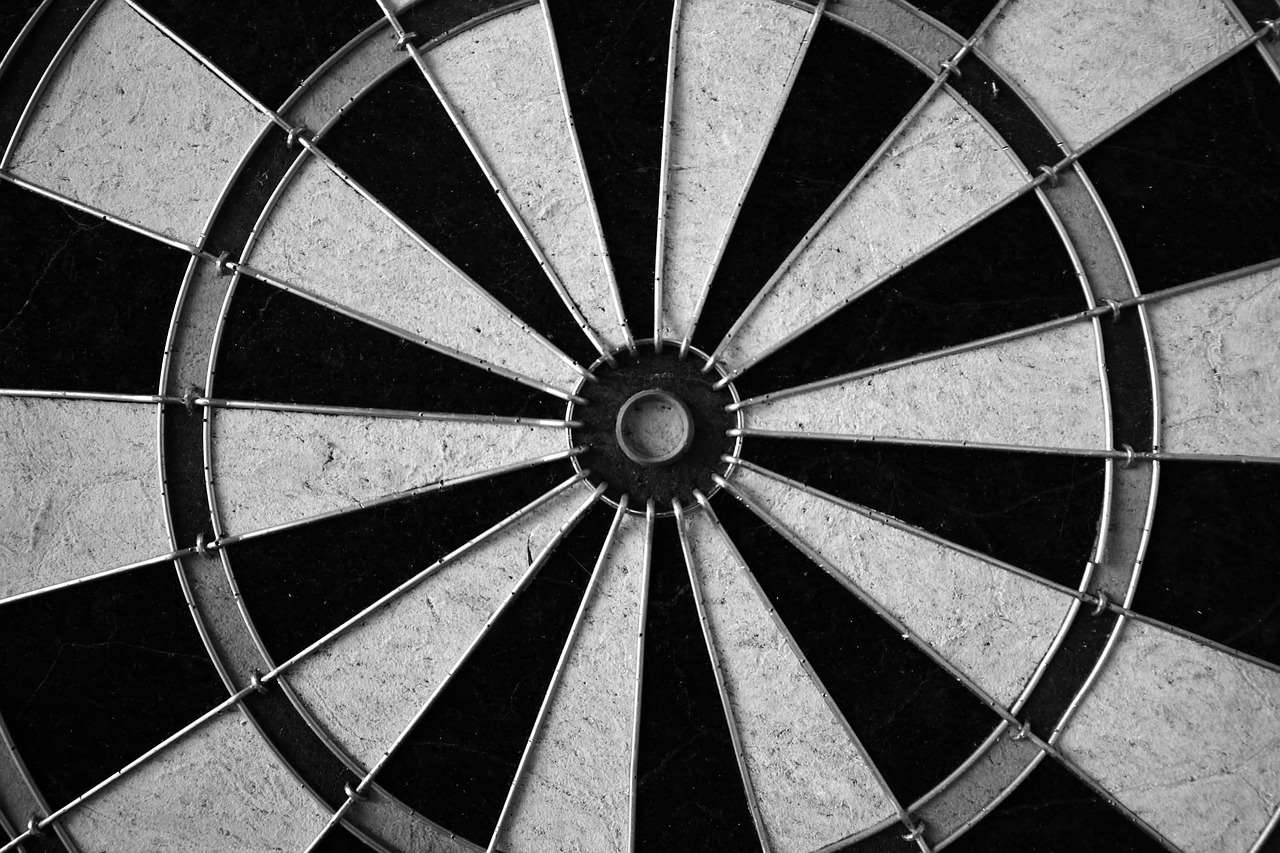Selecting the right **flight shape for different barrels** dramatically improves dart stability and accuracy; generally, shorter, wider barrels benefit from smaller flights, while longer, thinner barrels need larger flights for optimal balance. This article explores the best flight shapes to pair with various barrel types to enhance your dart game, covering everything from standard flights to specialized shapes.
⚠️ Still Using Pen & Paper (or a Chalkboard)?! ⚠️
Step into the future! The Dart Counter App handles all the scoring, suggests checkouts, and tracks your stats automatically. It's easier than you think!
Try the Smart Dart Counter App FREE!Ready for an upgrade? Click above!
Understanding How Flight Shape Impacts Dart Trajectory
The flight is a crucial component of a dart, influencing its trajectory and overall stability. Understanding the relationship between flight shape and barrel weight and length is essential for achieving consistent throws. Different flight shapes create varying levels of drag, affecting the dart’s speed and angle of descent.

The core principle is this: a larger flight creates more drag, slowing the dart down and stabilizing its flight path, particularly beneficial for heavier or longer barrels that naturally want to nose-dive. Conversely, smaller flights offer less drag, allowing for a faster, more direct flight, suited for lighter or shorter barrels.
Factors Influencing Flight Choice
- Barrel Weight: Heavier barrels generally require larger flights for added stability.
- Barrel Length: Longer barrels tend to benefit from larger flights to prevent nose-diving.
- Throwing Style: Your personal throwing style, whether you throw with a high arc or a low, straight trajectory, will influence the ideal flight shape.
- Grip: How you grip the dart also plays a role; a grip closer to the front of the dart might require a different flight compared to a grip closer to the back.
Matching Flight Shape For Different Barrels: A Detailed Guide
Let’s delve into specific flight shapes and which barrel types they complement best. This will provide a practical guide to optimizing your dart setup.
Standard Flights
Standard flights are the most common and versatile type of flight. Their larger surface area provides significant drag, making them suitable for:
- Heavier Barrels (24g+): The added drag helps stabilize heavier darts.
- Longer Barrels: They prevent nose-diving with longer dart barrels.
- Beginners: Standard flights offer forgiveness and control for those still developing their throwing technique. You should always Choose Best Dart Equipment that complements your skill level.
If you’re experiencing consistent tail-wagging or nose-diving, a standard flight might be the solution. They offer a balance of stability and control, making them a good starting point for many players.
Slim Flights
Slim flights are narrower and more streamlined than standard flights, offering less drag. They’re ideal for:
- Lighter Barrels (20g or less): The reduced drag allows lighter darts to fly faster and straighter.
- Shorter Barrels: They complement shorter barrels by maintaining a balanced flight path.
- Players with a Fast, Accurate Throw: Slim flights reward a clean, consistent release.

If you find your darts are flying too high or floating excessively, switching to slim flights could improve your accuracy. They’re often favored by players with a more controlled and powerful throw.
Kite Flights
Kite flights offer a compromise between standard and slim flights. They have a wider base that tapers towards the top, providing a balance of stability and speed. Consider them for:
- Medium-Weight Barrels (21-23g): They offer a good balance for mid-range dart weights.
- Players Seeking Enhanced Aerodynamics: The kite shape reduces drag compared to standard flights, while still providing adequate stability.
- Those Experimenting with Different Flight Shapes: Kite flights are a good option to try if you’re unsure whether to choose standard or slim flights.
Kite flights can be a versatile option for players looking for a flight that provides both control and speed. They are a good option when Buying Guide Budget Premium Dart Sets and need to determine which parts complement each other.
Pear Flights
Pear flights are wider than standard flights at their base but round off at the top, offering significant drag and lift. They’re well-suited for:
- Heavy Barrels: The extra lift helps stabilize heavier darts, preventing nose-diving.
- Players with a Looping Throw: The pear shape complements a high-arc throwing style.
- Those Who Need Maximum Stability: Pear flights provide exceptional stability, even at slower speeds.

If you struggle with darts consistently landing below your target, pear flights could provide the necessary lift to correct your trajectory. They are often preferred by players who prioritize stability over speed.
Other Specialized Flight Shapes
Beyond the common flight shapes, there are various specialized options designed for specific needs:
- Vortex Flights: Designed to reduce drag and improve dart speed.
- Fantail Flights: Offer increased stability, similar to pear flights but with a more pronounced tail.
- Heart Flights: A combination of standard and kite flights.
Experimenting with these less common shapes can sometimes provide a competitive edge, but it’s essential to understand their specific characteristics and how they interact with your barrel and throwing style. Some players might not understand Difference Budget Premium Darts when looking for dart parts.
Practical Tips for Choosing the Right Flight
Selecting the appropriate **flight shape for different barrels** involves some experimentation and observation. Here are some practical tips to guide your selection process:
- Start with Standard Flights: If you’re unsure, begin with standard flights and adjust from there.
- Observe Your Dart’s Trajectory: Pay attention to whether your darts are nose-diving, tail-wagging, or floating excessively.
- Make Small Adjustments: Change one variable at a time (flight shape, stem length, barrel weight) to isolate the impact of each change.
- Consider Stem Length: Shorter stems often pair well with larger flights, while longer stems can complement smaller flights. The best dart setup is when you Quality Comparison Budget Premium Darts and components.
- Seek Expert Advice: Consult with experienced dart players or professionals for personalized recommendations.

The Importance of Stem Length and Material
While **flight shape** is a critical factor, the stem length and material also play a significant role in dart flight. Longer stems generally increase stability, while shorter stems can improve speed. Common stem materials include nylon, aluminum, and carbon fiber, each offering different levels of durability and weight. The correct stem length complements the **flight shape for different barrels**, and balances the dart.
- Nylon Stems: Lightweight and affordable, but less durable.
- Aluminum Stems: More durable than nylon, but can bend upon impact.
- Carbon Fiber Stems: Lightweight and extremely durable, but more expensive.
Consider your throwing style and the frequency with which you play when selecting stem materials. Durable stems can save you money in the long run, but lightweight stems may enhance your throwing precision. Always consider the Are Premium Darts Worth It if you are changing equipment.

Experimentation is Key to Finding Your Perfect Setup
Ultimately, finding the ideal **flight shape for different barrels** is a personal journey. Experiment with various combinations of flights, stems, and barrels to discover what works best for your unique throwing style and preferences. Don’t be afraid to try different setups and track your results. Over time, you’ll develop a feel for how each component impacts your dart’s trajectory and accuracy. Remember, even small adjustments can make a big difference in your overall performance. Consider the best Investing In Premium Dart Equipment when setting up your equipment for playing Darts.
Conclusion
Optimizing your dart setup by choosing the right **flight shape for different barrels** is crucial for consistent and accurate throws. By understanding the relationship between flight shape, barrel weight, and your individual throwing style, you can fine-tune your equipment to maximize your potential. Start with standard flights, observe your dart’s trajectory, and experiment with different shapes and stem lengths until you find the perfect combination. Now that you have the information, go out and experiment with different dart setups to find the combination that elevates your game. Take what you’ve learned and apply it to your next dart game to see the difference a properly matched flight and barrel can make!
Hi, I’m Dieter, and I created Dartcounter (Dartcounterapp.com). My motivation wasn’t being a darts expert – quite the opposite! When I first started playing, I loved the game but found keeping accurate scores and tracking stats difficult and distracting.
I figured I couldn’t be the only one struggling with this. So, I decided to build a solution: an easy-to-use application that everyone, no matter their experience level, could use to manage scoring effortlessly.
My goal for Dartcounter was simple: let the app handle the numbers – the scoring, the averages, the stats, even checkout suggestions – so players could focus purely on their throw and enjoying the game. It began as a way to solve my own beginner’s problem, and I’m thrilled it has grown into a helpful tool for the wider darts community.